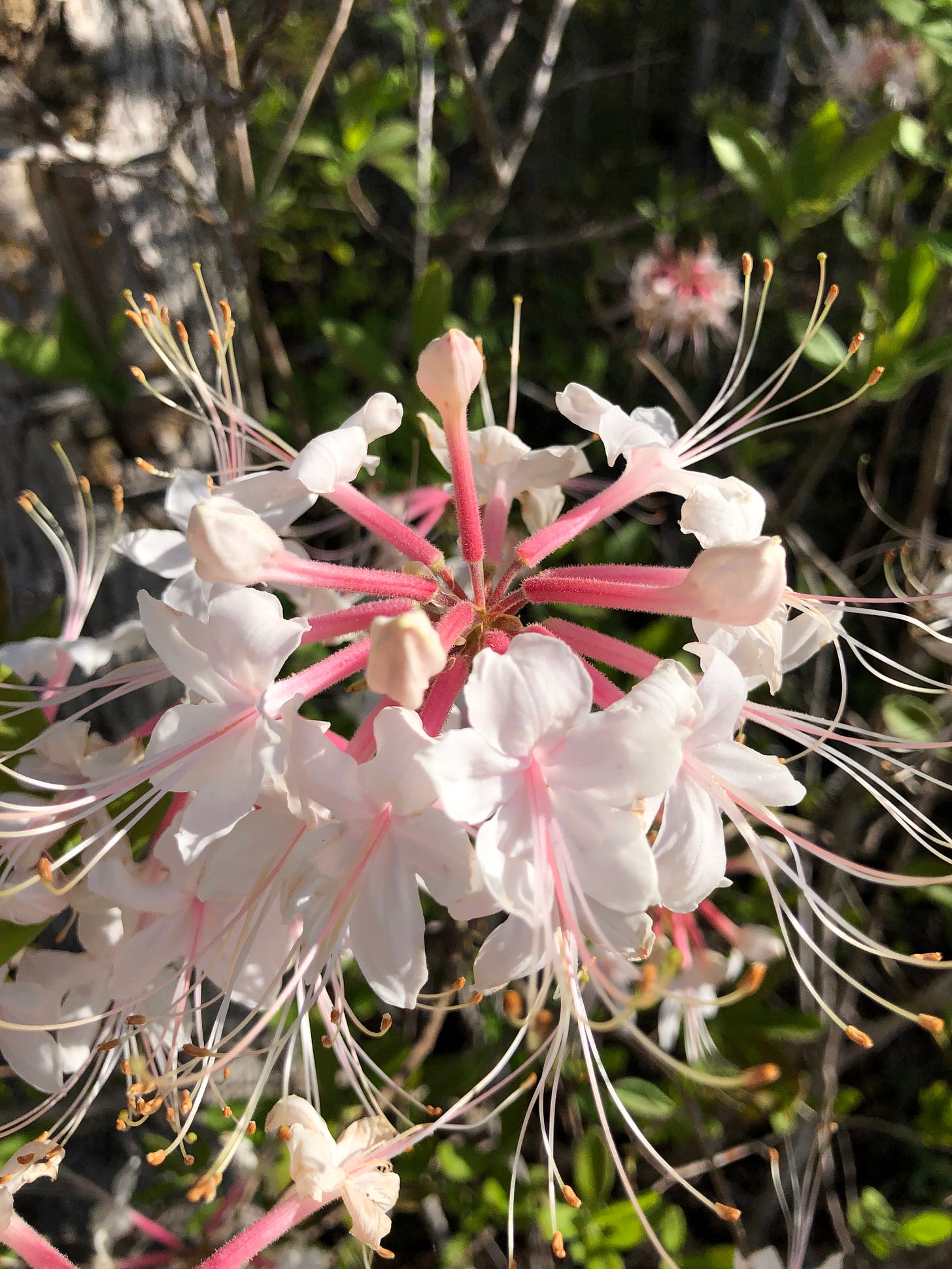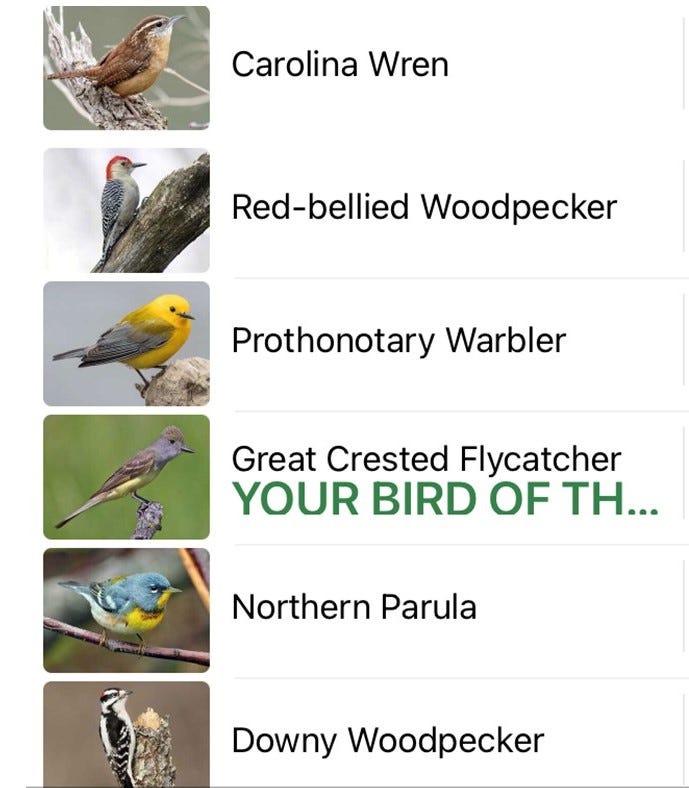The Sound of Silence
April is Native Plant Month! Celebrate it by planting native trees, shrubs, perennials, vines, and grasses. Your state’s Native Plant Society can help you select plants native to your area.
While on my walks, it’s strange how zoned out I can get. All other sounds – traffic, different people, power equipment – disappear. The blocked-out noises become white noise; there but not there.
The sound of silence is rather pleasant. My quiet morning walks are great for meditation, prewriting articles, letting my imagination run wild, or my favorite pastime – tuning in to the woodland bustle around me. It’s never boring.
It’s so sad to see other folks walking the trails with earphones or their eyes glued to a smartphone. One day, a couple carried on a very loud discussion, not caring who they were disturbing. Needless to say, the other humans and all the critters took off to quieter parts of the woods.
Hey, folks. What’s the point of being in a nature park if you’re not there to enjoy nature?
Anyway, you all know that I’m a big fan of native plants and insects and am always on the lookout for them. Big Disappointment! Residential yards are loaded with Asian azaleas, Chinese wisteria, and other non-native plants but remain totally devoid of local species, except for the gorgeous pink and white dogwood trees.
As far as native flowers go, I’ve observed only a handful, such as common blue violets, Carolina jessamine, blackberries, and crossvine, and they were all inside the park. I’m still on the lookout for native azaleas and American beautyberries. There have to be some bushes hiding in the woods somewhere!

As far as insects go, aside from gnats, bumblebees are all around and taking advantage of having the flowering plants mostly to themselves. Hopefully, in the coming weeks, I’ll see an upswing in indigenous flora and fauna.
In the meantime, I’ve discovered another way to enjoy my selective listening skills. I downloaded the Merlin bird identification app from Cornell University. It is so cool! I tried it out while walking in the nature park. I was flabbergasted at how many birds actually surrounded me! Within one minute, the app listed eight birds and added more as the minutes ticked by.
I’ve used the app numerous times, and each stint has recorded different combinations of birds. I’m beginning to identify some of the calls. The recognizable culprits include crows, blue jays, woodpeckers, mourning doves, chickadees, and cardinals – then other species pop up, such as Tufted Titmouse, White-breasted Nuthatch, Northern Parula, along with various vireos, warblers, finches, thrushes, and on and on. It would take a lifetime to learn all their songs.
I only wish I could see them. Unfortunately, the foliage provides perfect cover, so I’ve only seen one – a Red-bellied Woodpecker. If I could remember which storage box my binoculars are packed in, birdwatching would be much easier.
Apps have made my walks so much easier. I envy people who can walk along a path and know the common and scientific names for every plant, insect, or bird. Not me. I do good to remember a few plant names while they’re blooming, but then I must relearn them the following year. Ah, well, the joys of getting older!
If you’re a nature lover with a short memory like me, I strongly recommend downloading apps for identifying birds, plants, and insects. Even if you never leave your yard, they come in handy while enjoying nature from the patio.
Open your eyes and mind to truly “see” the fascinating wonders this planet has to share with you. You’ll be flabbergasted, too.
Please use the buttons below to Like, Comment, Restack, and Share my post on Substack and other social media platforms.
THANK YOU SO MUCH!







I love to listen to the birds especially as they start to return in spring. There is a red-breasted sapsucker that has claimed a spot on the telephone pole transformer outside our house. He likes to tap his call to any potential mate in the area....or maybe he's telling other males to stay away (?). Anyway, it's loud!!